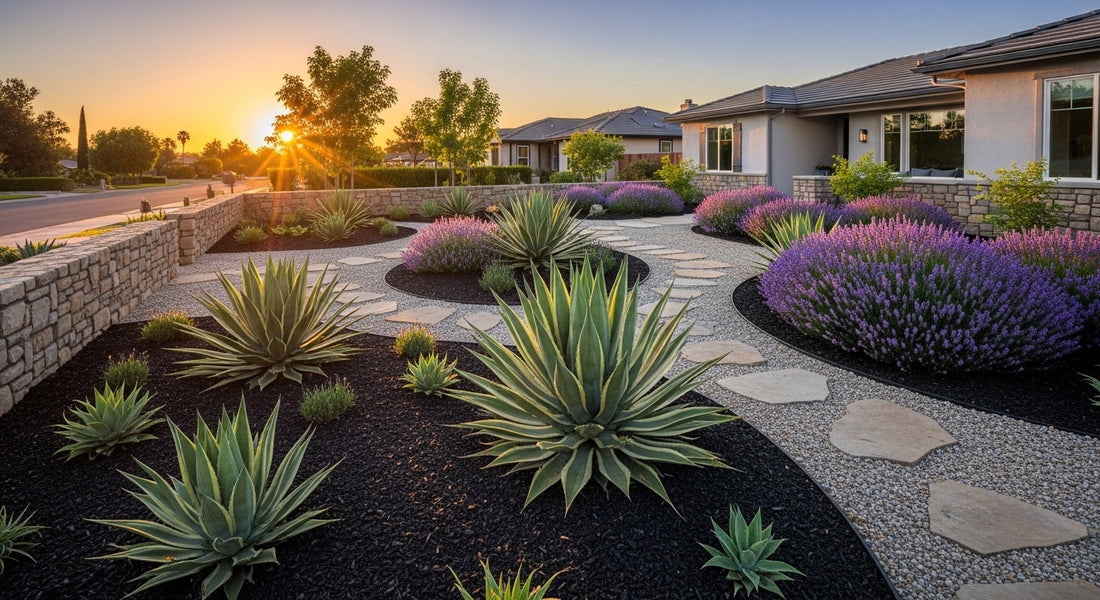
Drought-Tolerant Landscaping: 10 Xeriscaping Ideas to Save Water and Effort
Share

A lush, green yard is often seen as the ideal, but maintaining that ideal can require a staggering amount of water, time, and money, especially in increasingly dry climates. This is where xeriscaping offers a brilliant solution. What is xeriscaping? It's often misunderstood as just rocks and cactus, but it's actually a smart and sustainable approach to landscaping that focuses on designing a beautiful garden that requires minimal supplemental water. The benefits are compelling: you'll save money on your water bill, spend less time on maintenance, conserve precious environmental resources, and create a unique, stylish landscape. These xeriscaping ideas are about creating a beautiful yard that works with your environment.
Key Principles of Xeriscaping
Successful xeriscaping is built on a few core principles:
-
A. Smart Plant Selection: This is the heart of xeriscaping. Choose drought tolerant plants that are native or well-adapted to your specific climate. These plants are naturally equipped to handle dry conditions once established. Grouping plants with similar water needs ("hydrozoning") is also crucial for efficient watering.
-
B. Reducing Lawn Areas: Traditional turf grass is the thirstiest element in most yards. Significantly reducing or eliminating lawn areas is the fastest way to cut your water usage. Consider replacing grass with low-water groundcovers, patios, decks, or beds of ornamental grasses and gravel.
-
C. Efficient Irrigation: When you do need to water, do it efficiently. Drip irrigation systems and soaker hoses deliver water directly to the plant roots with minimal evaporation loss, unlike traditional sprinklers. Watering deeply and infrequently encourages deep root growth, making plants more drought-resistant.
-
D. Using Mulch: Mulch is a xeriscaping essential. A 2-3 inch layer of organic mulch (like wood chips or bark) or inorganic mulch (like gravel or pebbles) shades the soil, suppresses weeds, and dramatically reduces water evaporation. Mulching to prevent weeds and retain moisture is key.
-
E. Proper Soil Preparation: Healthy soil is the foundation. Amending your soil with compost improves its structure and water-holding capacity, allowing it to absorb and retain moisture more effectively.
10 Stunning Drought-Tolerant Plants for Any Garden
Building a low-water garden doesn't mean sacrificing beauty. Here are ten stunning options:
-
Lavender: Fragrant purple spikes, loves sun, attracts pollinators.
-
Coneflower (Echinacea): Hardy daisy-like flowers in various colors.
-
Sedum (Stonecrop): Succulent with interesting textures and late-season blooms.
-
Russian Sage: Airy silver foliage with spires of purple flowers.
-
Yarrow: Flat-topped flower clusters in yellow, white, or pink; very tough.
-
Agave: Dramatic, sculptural succulent for a desert vibe (choose cold-hardy varieties if needed).
-
Rosemary: Evergreen shrub with fragrant needles; useful in the kitchen.
-
Feather Reed Grass: Tall, upright ornamental grass with feathery plumes.
-
Blue Fescue: Clumping blue-gray grass, great for borders.
-
Catmint (Nepeta): Similar look to lavender, very drought-tolerant and blooms for a long time.
Simple Design Ideas to Get You Started
-
Create a Dry Creek Bed: Use river rocks and boulders to mimic the look of a natural, dry stream bed. This adds visual interest, helps manage drainage during rainy periods, and creates planting pockets for drought-tolerant plants along the edges.
-
Design a Gravel Garden: Replace a section of lawn with pea gravel or crushed stone. Plant a few sculptural accent plants (like agave or ornamental grasses) directly into the gravel for a modern, low-maintenance look.
